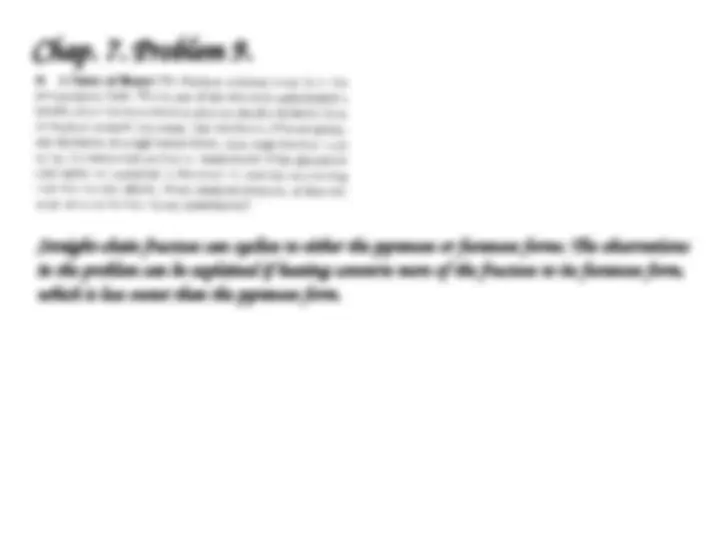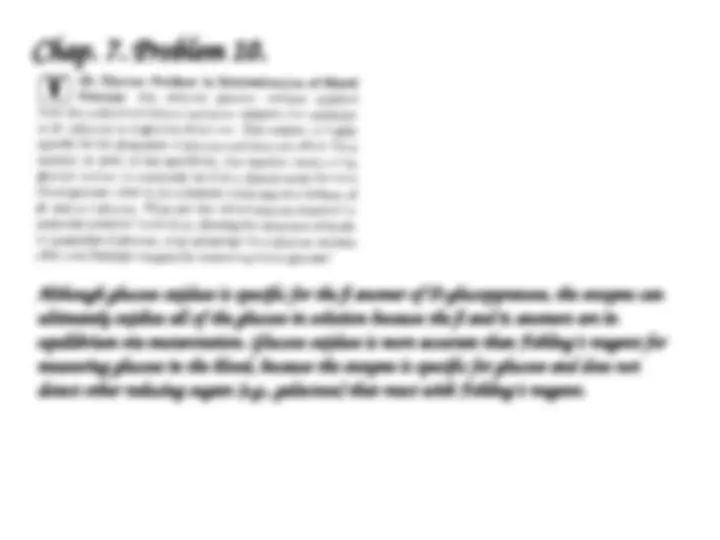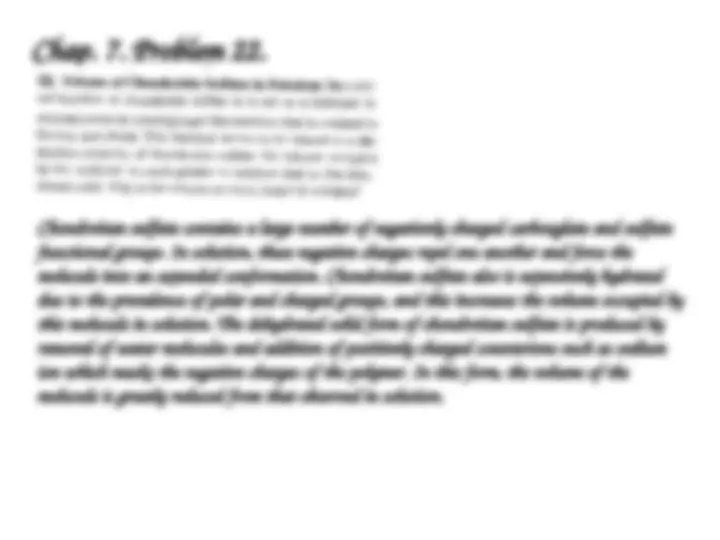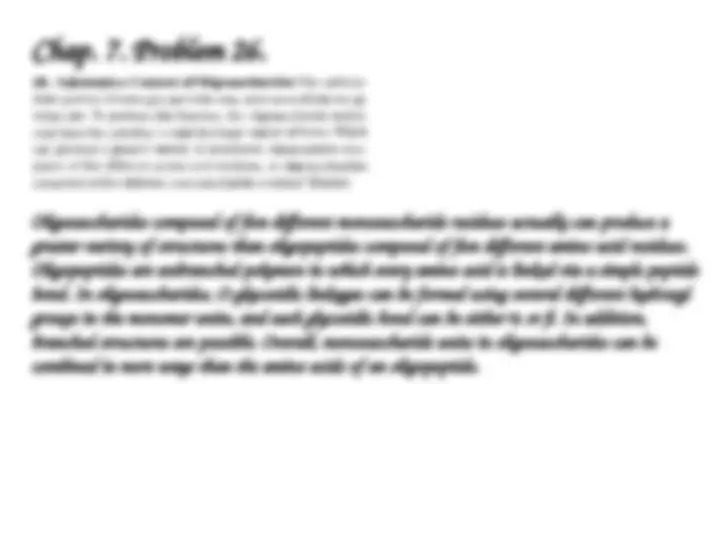







Study with the several resources on Docsity

Earn points by helping other students or get them with a premium plan


Prepare for your exams
Study with the several resources on Docsity

Earn points to download
Earn points by helping other students or get them with a premium plan
Community
Ask the community for help and clear up your study doubts
Discover the best universities in your country according to Docsity users
Free resources
Download our free guides on studying techniques, anxiety management strategies, and thesis advice from Docsity tutors
Solutions to various problems related to carbohydrate chemistry, covering topics such as epimers, homopolysaccharides (cellulose and glycogen), monosaccharides (D-glucose and D-fructose), disaccharides (maltose and sucrose), and the behavior of fructose. It explains the differences in structure and properties of these compounds, including their anomeric forms, glycosidic linkages, and sweetness.
Typology: Lecture notes
1 / 9

This page cannot be seen from the preview
Don't miss anything!






Epimers are stereoisomers that differ in the configuration about only one carbon. The epimers of these sugars at carbons 2, 3, and 4 therefore are: (a) D-allose: D-altrose (C-2); D-glucose (C-3); D-gulose (C-4). (b) D-gulose: D-idose (C-2); D-galactose (C-3); D-allose (C-4). (c) D-ribose: D-arabinose (C-2); D-xylose (C-3).
(a) Cellulose and glycogen: Both of these compounds are homopolysaccharides of D-glucose. Cellulose is a linear polymer, whereas glycogen is a branched polymer. O-glycosidic linkages in cellulose are exclusively (ß14). O-glycosidic linkages in glycogen are ( 1 4) in the main chains and ( 1 6) at branch points. (b) D-glucose and D-fructose: Both of these monosaccharides are hexoses. D-fructose is a ketose, and D-glucose is an aldose. (c) Maltose and sucrose: Both of these sugars are disaccharides. Maltose contains two ( 1 4) linked D-glucose units. Sucrose contains ( 1 2ß) linked D-glucose and D- fructose units. Maltose is a reducing sugar; sucrose is not.
Although glucose oxidase is specific for the ß anomer of D-glucopyranose, the enzyme can ultimately oxidize all of the glucose in solution because the ß and anomers are in equilibrium via mutarotation. Glucose oxidase is more accurate than Fehling’s reagent for measuring glucose in the blood, because the enzyme is specific for glucose and does not detect other reducing sugars (e.g., galactose) that react with Fehling’s reagent.
Lactose (Gal(ß14)Glc) exists in two anomeric forms because the free anomeric carbon (C-1) in the glucose residue can undergo mutarotation. In sucrose (Glc( 1 2ß)Fru), the anomeric carbons of both monosaccharides are linked via an O-glycosidic bond. Thus, sucrose lacks a free anomeric carbon that can intercovert between and ß forms via mutarotation.
In glycogen, the ( 1 4) linkages in the main chains produce bends in the chains and limit the formation of long fibers. Branching also favors the formation of a globular, granular structure. Many of the hydroxyl groups of glucose units in the polymer are exposed to water and are hydrated, which explains why glycogen can be dispersed in hot water to make a turbid solution. In cellulose, glucose units are linked via (ß14) linkages. This allows the polymer to adopt an extended conformation in which parallel chains are held together via numerous interchain hydrogen bonds. Water is mostly excluded from cellulose which forms insoluble, tough fibers. Cellulose therefore is well suited to take on a structural, supportive role in plants. Glycogen, due to branching and hydration, is well suited to serve as an energy repository from which glucose units can readily be liberated by enzymatic cleavage.
Chondroitan sulfate contains a large number of negatively charged carboxylate and sulfate functional groups. In solution, these negative charges repel one another and force the molecule into an extended conformation. Chondroitan sulfate also is extensively hydrated due to the prevalence of polar and charged groups, and this increases the volume occupied by this molecule in solution. The dehydrated solid form of chondroitan sulfate is produced by removal of water molecules and addition of positively charged counterions such as sodium ion which masks the negative charges of the polymer. In this form, the volume of the molecule is greatly reduced from that observed in solution.